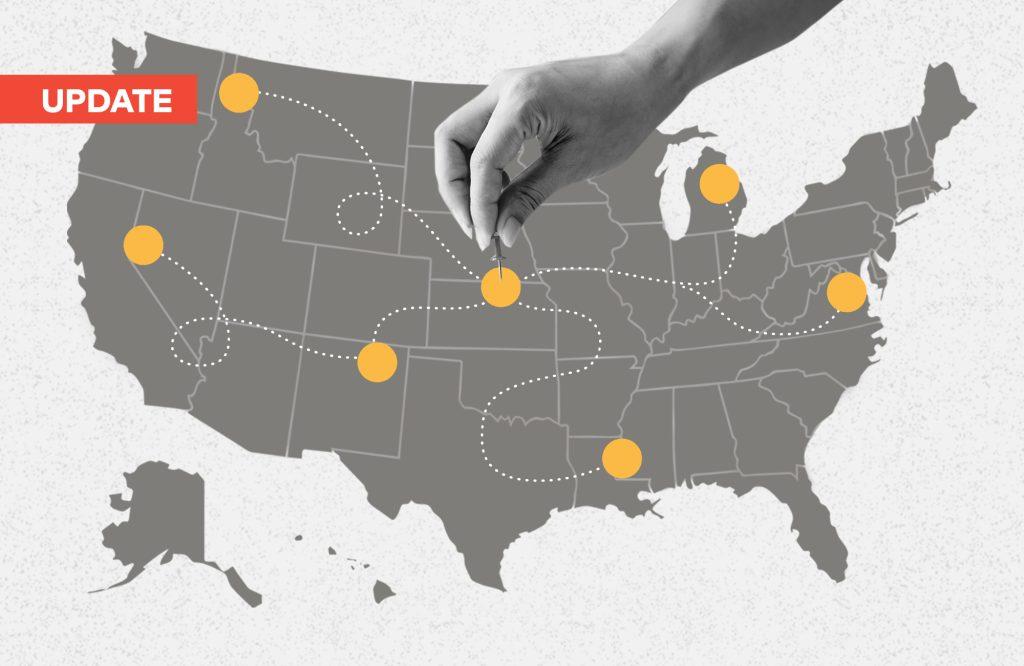In cities across the world, the 2010s cannot have been a fun decade to be the authority responsible for administering taxi licenses. The aggressive expansion of ride-sharing companies, which often showed little regard for existing rules and practices, came as a shock to cities’ regulatory systems. While the high consumer demand for ride-sharing services made a compelling case for regulatory reform, entrenched taxi licensing frameworks that had hitherto evolved only gradually (if at all) suddenly struggled to come to grips with the rapidly shifting terrain. The costs of those adaptation challenges were felt by all stakeholders, including the incumbent regulated population of licensees, the disruptive new market entrants, and the licensing bodies themselves.
Regulators often struggle with disruptive innovations
Whether or not they’ve faced their own “Uber moment” yet, most regulated industries across most jurisdictions can feel the pace of change quickening today. New types of services, providers, and business practices – often aided by technological advancements – are arriving in every field. They aren’t always patient for regulators to apply their usual processes.
And when those usual processes are rooted in regulatory frameworks that were established for a specific legislated purpose, at a specific point in time, with a specific picture of the regulated field in mind that a disruptor has now blurred, it’s worth asking whether those usual processes are still fit for purpose.
Rigid, long-established regulations and protocols offer a degree of certainty to all interested parties. However, they can prove particularly vulnerable to disruptive new market entrants or practices. Where novel proposals appear to offer promise, but also do not squarely fit within existing regulations, it can be difficult for regulators to find any options available between (a) outright prohibition or (b) insistence on full compliance with all regulations. While most regulators do regularly seek to evolve their standards, they can be caught flat-footed in these circumstances. They can feel constrained by the need to make urgent policy choices in an evidentiary vacuum.
Embracing opportunity through regulatory sandboxes
Regulators that can overcome the limitations of their frameworks will be well-positioned not only to meet these emerging challenges, but also to embrace them equally as opportunities to evolve standards and to better meet the public interest.
Regulators are increasingly turning to an innovative policy tool called a “sandbox” to address these challenges. Sandboxes can offer flexibility and sustainability for regulators seeking to adapt to changing conditions in their domains.
The “regulatory sandbox” concept was first developed by financial services regulators in Europe and North America as a response to new “FinTech” products like cryptocurrencies. They have since been adapted around the world for countless other industries, including health care, law, energy, and transportation. In all of these settings, regulators have turned to sandboxes to help them consider innovations and disruptions through a more flexible and evidence-based approach.
Sandbox nuts and bolts
Typically, a regulator will establish a sandbox as a collaborative initiative that permits people or businesses to offer new kinds of products, services, or business models within a “safe zone” that it supervises. Where those innovative offerings would otherwise run afoul of existing regulations, the sandbox offers a more flexible environment where certain rules can be relaxed for approved providers, who in turn submit to the regulator’s supervision. The regulator continues to ensure public protection, via modified methods that include tailored risk assessment, data collection, auditing, and quality assurance testing. The regulator also seeks to learn from the experiences of sandbox participants with the longer-term aim of evolving its regulatory framework.
By agreeing to safely remove and adjust regulatory barriers within the sandbox, regulators seek to encourage innovations in their industry that can ultimately benefit the public. Participants gain the opportunity to experiment with and refine their products and services within a supportive regulatory environment that insulates them from the risk of being shut down for non-compliance with existing regulations. After a limited time period of operation within the sandbox, regulators can assess whether a participant’s offering is ready for full operation in the market, and if so, can issue a more expansive approval.
Regulation should never be static. Sandboxes offer regulators a tool for continuous evolution in harmony with continuous innovation within the regulated field. They advance risk-based regulation in real-time.
Sandboxes are a global trend
Applying this basic model, the U.K.’s financial regulator built a sandbox for digital financial technologies, Singapore’s health regulator built a sandbox for telemedicine and mobile medicine providers, Ontario’s energy and natural gas regulator built a sandbox to test new kinds of activities in the delivery of energy services, and the legal regulators in Utah and several Canadian provinces have built sandboxes for innovative legal services and business models. These are just a handful among many examples around the world.
Based on the early promise shown by the regulatory sandbox concept, federal governments in Canada, Germany, and other jurisdictions have established coordinating departments to encourage adoption of sandbox initiatives across ministries and industries. Had sandboxes been in place for taxi licensing authorities during the 2010s, it is tempting to wonder whether the rapid arrival of ride-sharing companies could have been addressed in a less challenging, less costly, and more efficient way, with increased collaboration leading to better outcomes for the public.
Will Morrison is an independent consultant who advises Canadian regulators on policy, strategy, and governance matters. He previously served as the manager of the Law Society of Ontario’s regulatory sandbox for innovative legal services.
MORE VOICES ARTICLES

Trust on trial: Navigating the murky waters of scientific integrity
As fraudulent research papers flood academic journals, the sanctity of scientific discovery is under siege, challenging the very foundation of trust we place in peer-reviewed publications. With AI now both a tool for creating and detecting such deceptions, the urgency for a robust, independent regulatory framework in scientific publishing has never been greater.

Do regulators deserve deference?
In a pivotal moment for regulatory law, the U.S. Supreme Court’s review of the Chevron doctrine could redefine the bounds of deference courts give to regulatory agencies, potentially inviting more challenges to their authority. This critical examination strikes at the heart of longstanding legal principles, signaling a significant shift in the landscape of regulatory oversight and its interpretation by the judiciary.

From Frankenstein to Siri: Accountability in the era of automation
As AI advances in sectors from health care to engineering, who will be held accountable if it causes harm? And as human decision-makers are replaced by algorithms in more situations, what will happen to uniquely human variables like empathy and compassion? Harry Cayton explores these questions in his latest article.

Regulating joy: The risky business of festivities
In his final Voices article of 2023, Harry Cayton reflects on our enthusiasm for participating in cultural festivities that often cause injuries or even deaths, which has led some governments to attempt to regulate these risky celebrations.

Building my regulator of tomorrow with LEGO® bricks
What should the regulator of tomorrow look like? While there may be no definitive vision, contributor Rick Borges gets creative with answering this important question, drawing inspiration from a favorite toy to ‘build’ a model of an effective future regulator.

‘Thin’ and ‘thick’ rules of regulation: Cayton reviews Daston’s history of what we live by
Lorraine Daston explores fascinating examples of rulemaking throughout history in her new book, ‘Rules: A Short History of What We Live By.’ In this article, Harry Cayton discusses what regulators can learn from Daston’s work.








